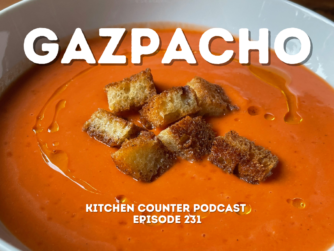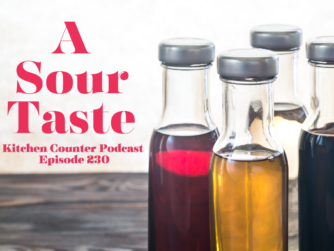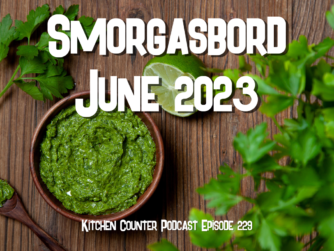Download the episode MP3 (right click to save)
Today’s quick fix tackles an age-old question in the kitchen; what kind of salt should I use? There are countless varieties of salt found all over the world, and it can be confusing to know which type of salt to use for which applications? In fact, you might be asking yourself right now: why do I even need more that one type of salt in my kitchen? I mean, salt is salt right? Just for fun I googled gourmet salt, and here is what’s listed for sale in the very first website result:
TO keep it simple, I’m going to cover the three main types of salt the typical home cook uses most often. These are: table salt, sea salt, and kosher salt.
Table salt: This is the salt you generally see in the cylindrical containers, and is the type you find in salt shakers all over the country. Table salt can be iodized (iodine is added into the final product because it has health benefits), or un-iodized. Table salt dissolves very easily, and can be measured very acuratly because of its small crystal structure. If you need salt for baking, then table salt is the way to go. If you only had room for one type of salt in your kitchen, then I would say table salt would be it.
Kosher salt: Kosher salt is my favorite salt for cooking. It is minimally processed, and has a large crystaline structure which means its large and flaky. It’s also quite easy to crush with your fingers if you need a finer grain. That makes it easy to pinch to add into food, and it won’t dissolve quite as quickly as table salt. Because of this Kosher salt can help make a great crust when you are searing a steak, for example. Contrary to its name, kosher salt isn’t specifically kosher (there isn’t anything about any salt that necessarily makes it not kosher) but the term originally arose from the fact that kosher salt was used to rubbed on meat to reduce surface blood as required by kosher laws.
Sea Salt: Sea salt is produced from evaporated seawater as its name suggests. It’s minimally processed, and usually has traces amounts of other minerals, often giving different sea salts distinctive flavors. Sea salt can be found in many textures, from fine and powdery like table salt, to course and flaky like kosher salt. I often use coarse sea salt interchangeably with kosher salt. Some sea salt, like the more expensive fleur de sel, has a very delicate flavor and is better used as a finishing salt (that is salt you sprinkle when serving food) rather than during cooking.
So to recap: Table salt is best for baking, while kosher salt is excellent for cooking. Sea salt can be great for cooking as well, and is often excellent as a finishing salt.



